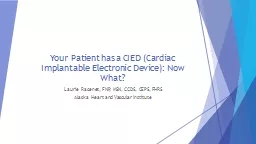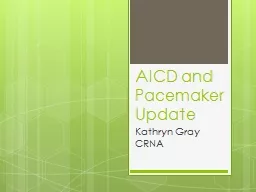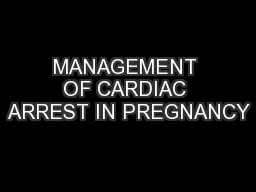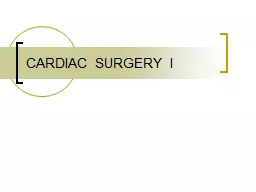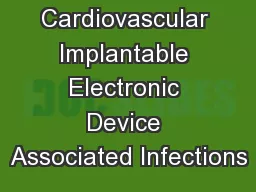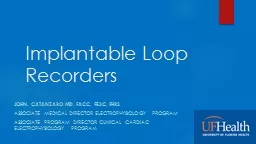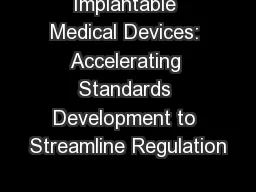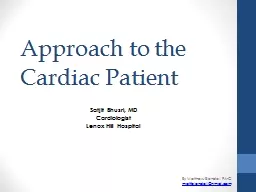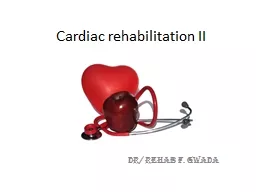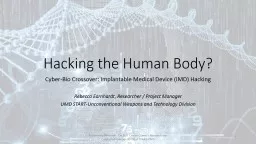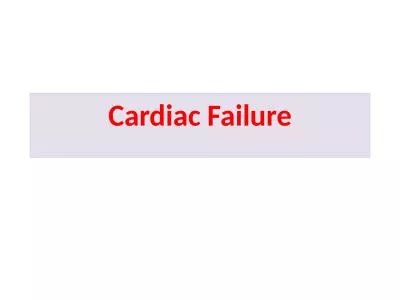PPT-Your Patient has a CIED (Cardiac Implantable
Author : liane-varnes | Published Date : 2018-03-16
E lectronic Device Now W hat Laurie Racenet FNP MSN CCDS CEPS FHRS Alaska Heart and Vascular I nstitute Types of Devices Pacemakers Single Dual BiV CRT
Presentation Embed Code
Download Presentation
Download Presentation The PPT/PDF document "Your Patient has a CIED (Cardiac Implant..." is the property of its rightful owner. Permission is granted to download and print the materials on this website for personal, non-commercial use only, and to display it on your personal computer provided you do not modify the materials and that you retain all copyright notices contained in the materials. By downloading content from our website, you accept the terms of this agreement.
Your Patient has a CIED (Cardiac Implantable: Transcript
Download Rules Of Document
"Your Patient has a CIED (Cardiac Implantable"The content belongs to its owner. You may download and print it for personal use, without modification, and keep all copyright notices. By downloading, you agree to these terms.
Related Documents

